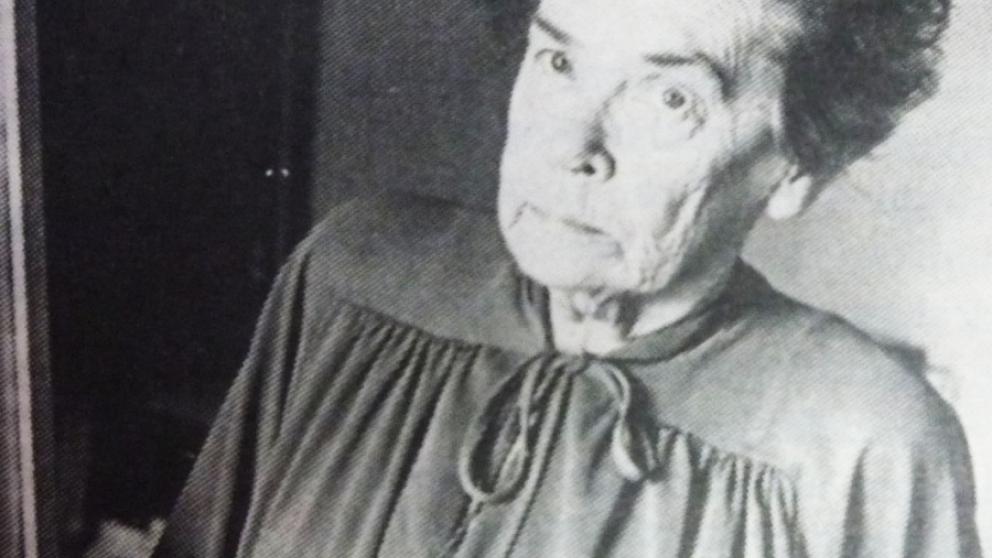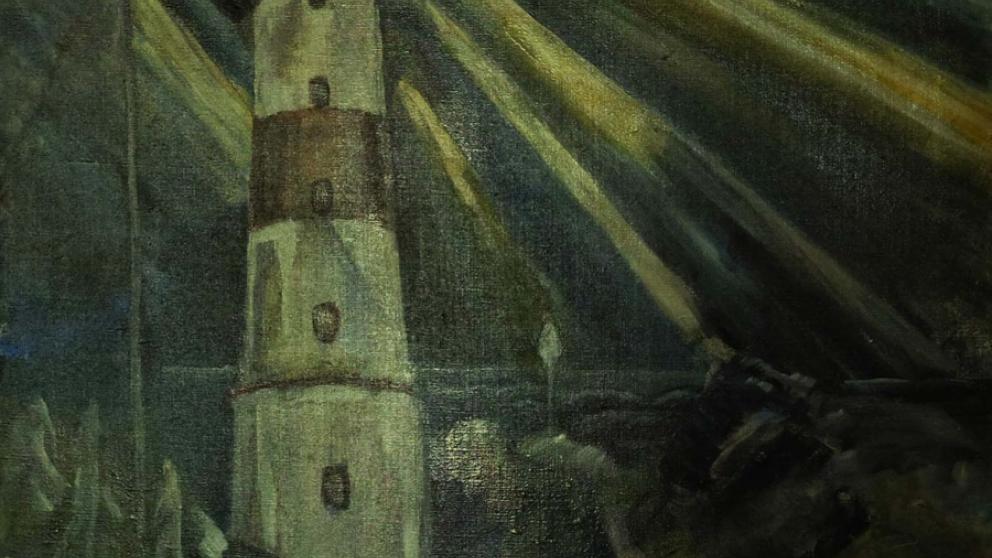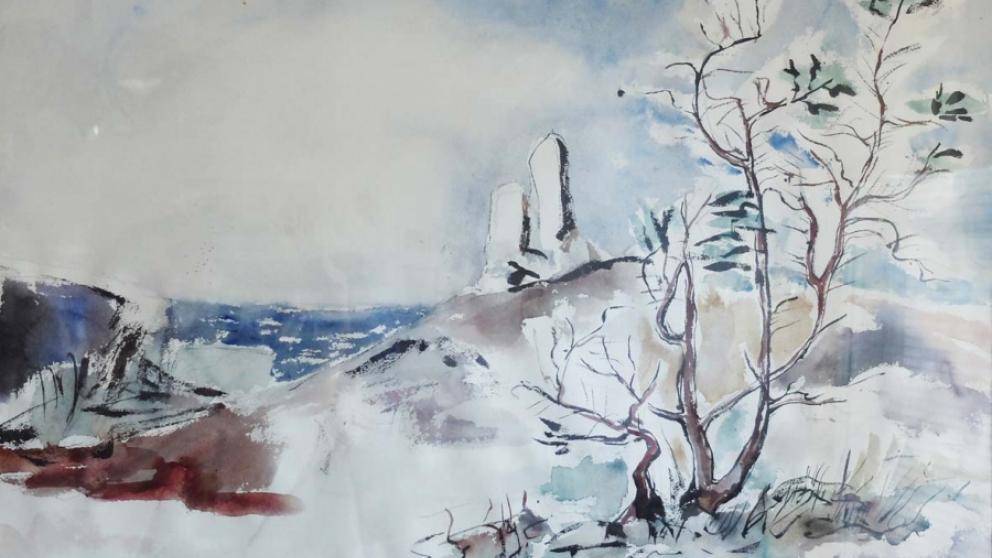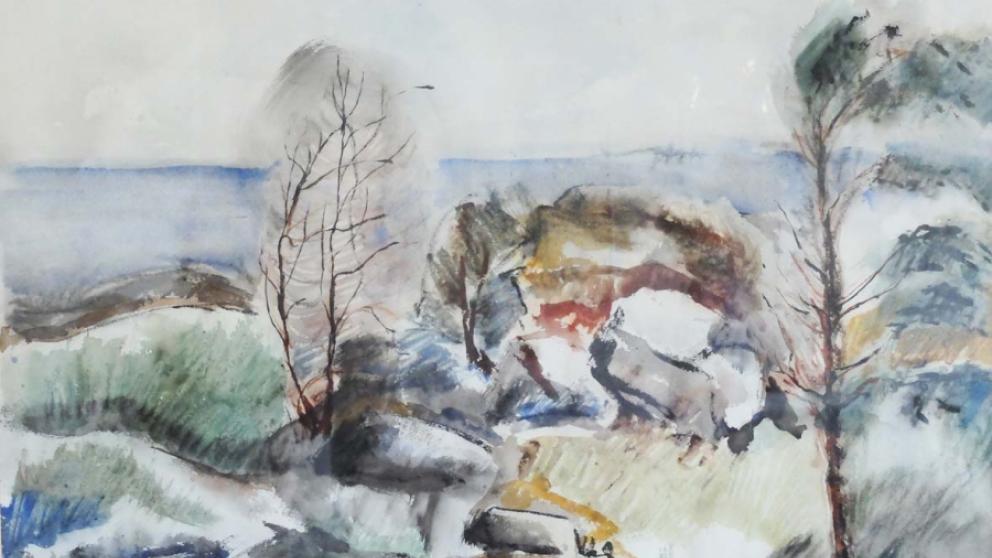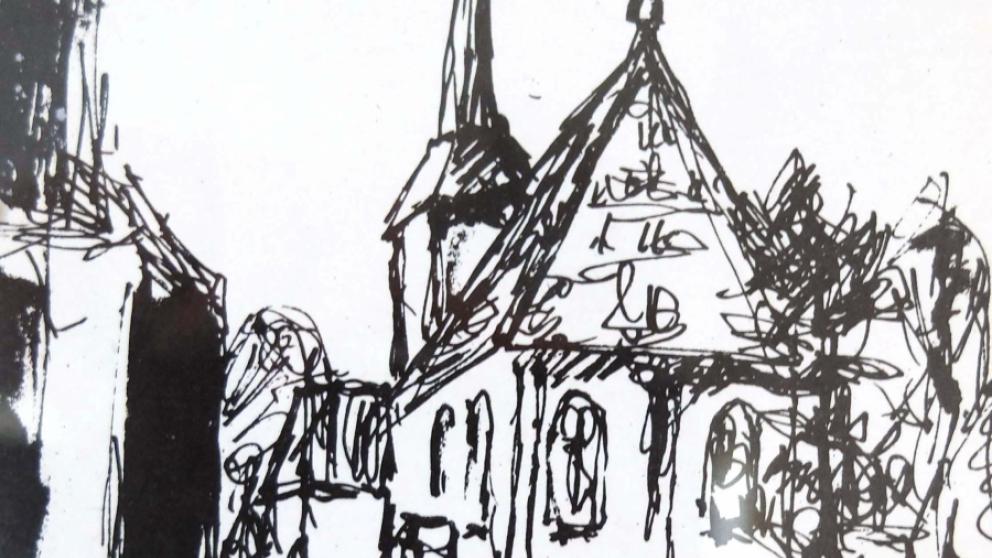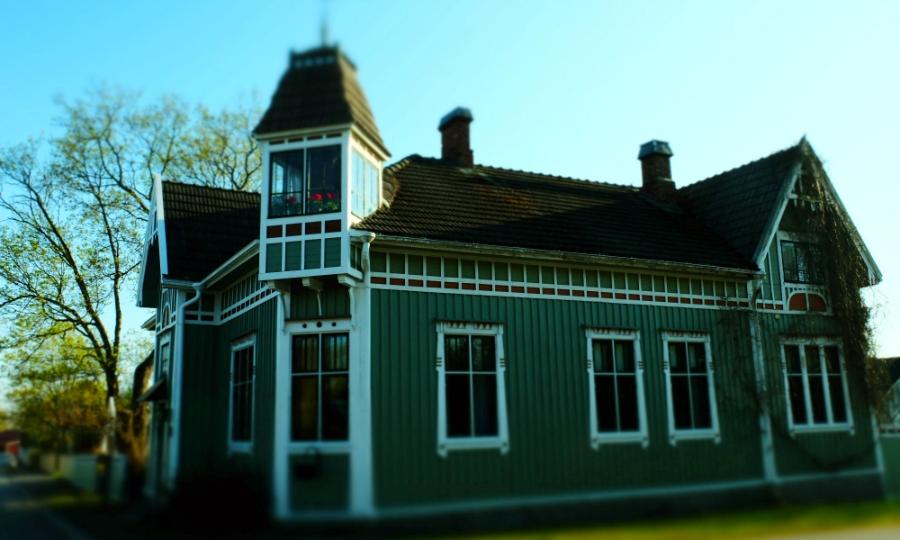
Rådhusgatan 8 - Birgitta Recksén
Birgitta Recksén
Painter
(b. 1919 - d. 2004)
The artist Birgitta Recksén made her mark as a master of frescoes and glass paintings. She has created church art in Italy, Denmark, and Finland, and her work has been exhibited all over Europe.
This is the house where Birgitta was born. Her father, Eric Recksén, built it in 1912, and she was born here seven years later, the youngest of five girls.
Birgitta's father was a land surveyor. He also had a grocery store in an annex of the house, as did many people in Kaskinen. Birgitta's mother, Maria Blondina Mellin, was from further away, born in the western United States.
Birgitta was only five when she got a form of tuberculosis that affects the bones. The disease, rather common at the time, was extremely difficult for the patient. To support the weakening skeleton, the patient had to wear a full-body plaster. Birgitta was not saved from this fate. She had to stay in bed for three whole years, immobilised by a plaster. This must have been incredibly hard for a young child.
She recovered well, though she experienced some lingering problems with her spine. It took years for her to grow strong enough to play outdoors with the other children. However, boredom with staying indoors was transformed into many creative hours - Birgitta spent most of the time drawing and her mother soon became aware of her artistic talent.
The Recksén family moved to Turku, and at age 17 Birgitta began to study art there. She continued her studies in Stockholm, after which she worked as a ceramic for Kupittaan Savi and later became manager of the design department for Pukkila, a major Finnish tile manufacturer, formerly known as Turku Tilefactory.
Birgitta soon fell in love with Italy. After the Second World War, she had an opportunity to travel to Rome, where she held two exhibitions. The Italians awarded her a scholarship, which allowed her to stay in Southern Europe much longer. She studied in Assisi at the Monastery of St Bridget, where she became familiar with the /stucco lustro/ technique of fresco-painting. In Venice, she studied glass-painting. She put both sets of skills to use in several pieces for churches, bringing a touch of Italy to Turku and various locations in Denmark.
She described herself as lucky to find a suitable man and get married. That man was Hilding Lindholm, who fully supported her career as an artist. After retiring, the couple settled in Kristinestad, not far south of Kaskinen. Birgitta was very active in art societies in the area, and she continued teaching and working with local artists into old age.

